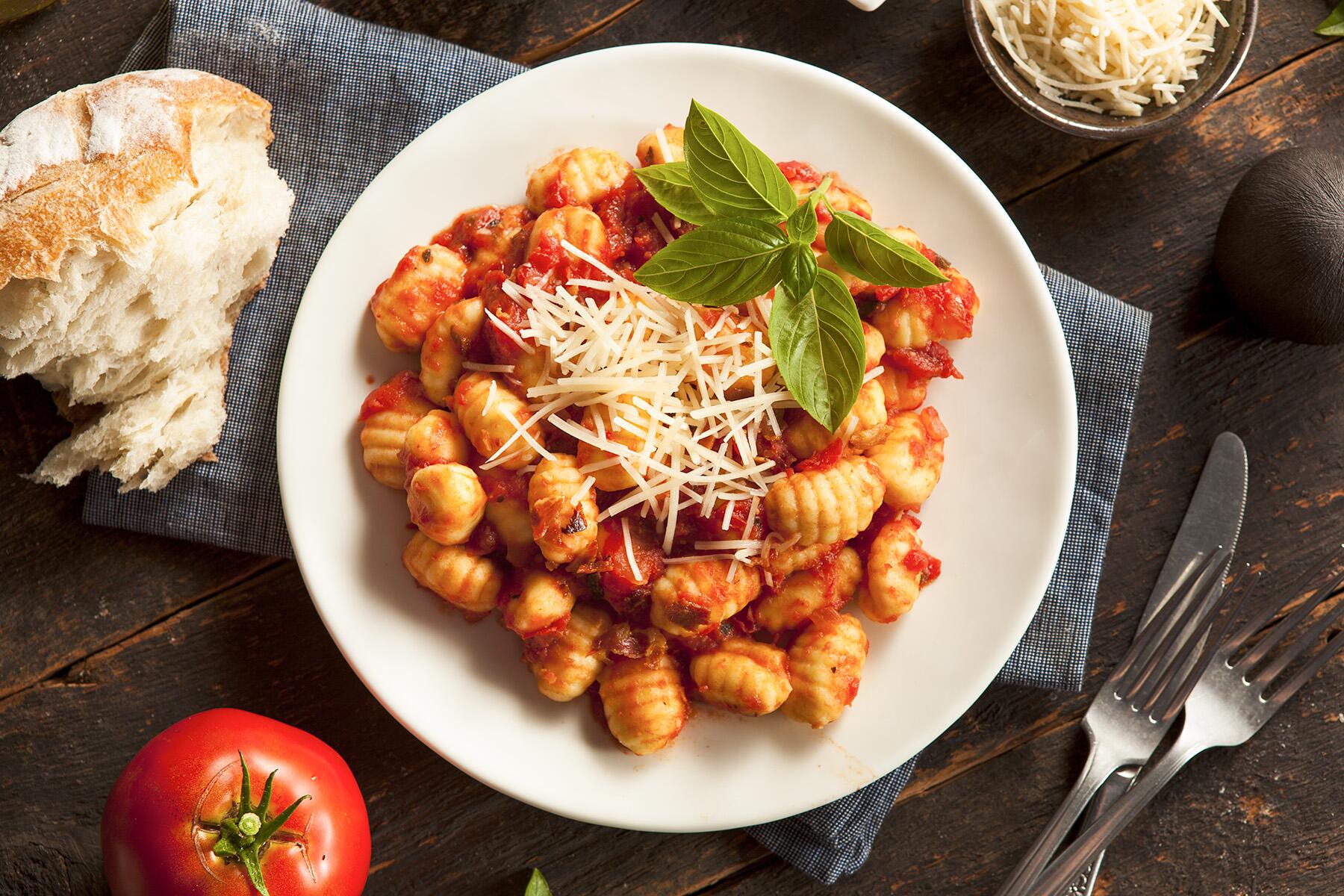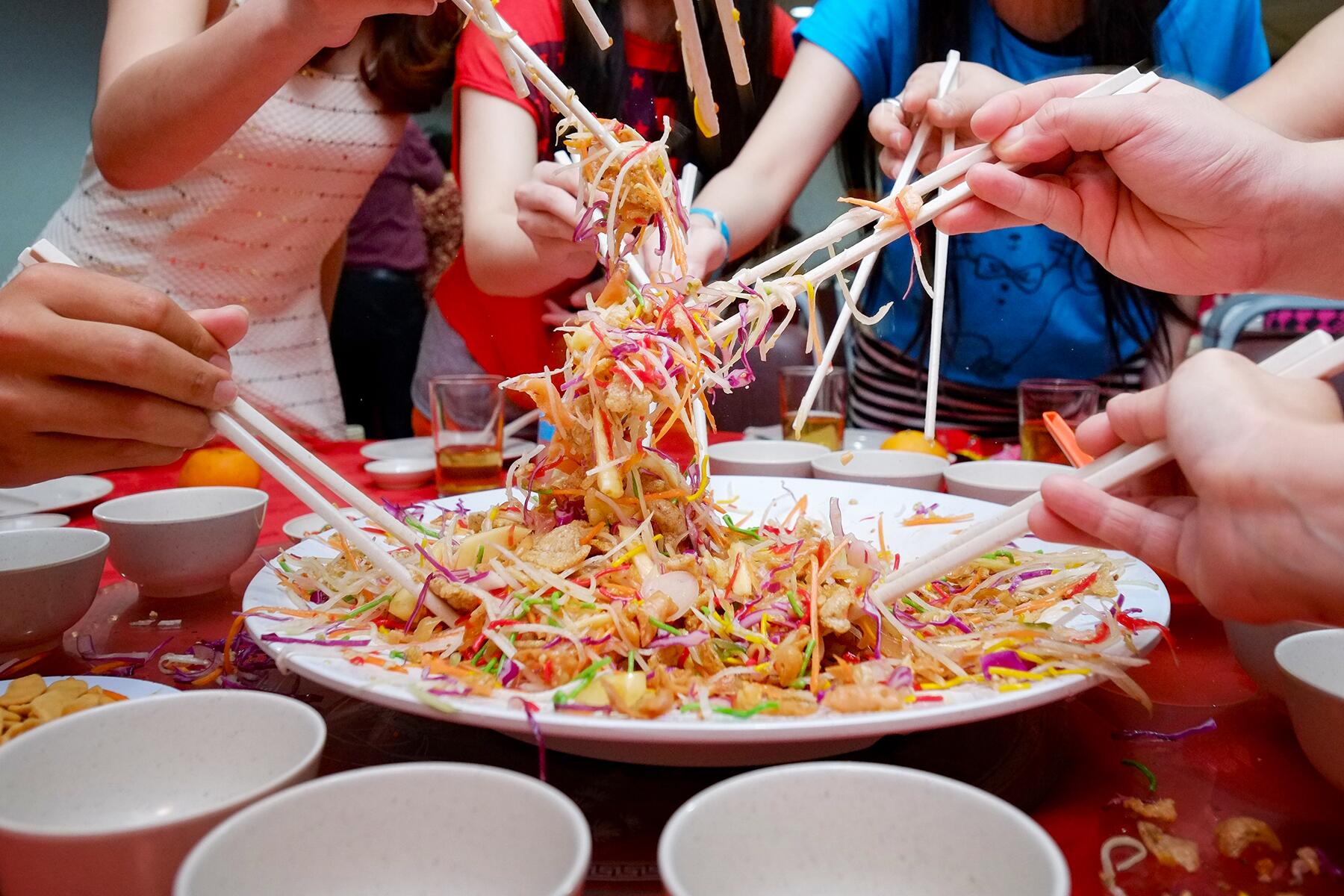In Chinese communities in Malaysia, the Lunar New Year is celebrated with a dish that promises the coming months will be filled with wealth and prosperity.
The Chinese community in Malaysia is getting ready to welcome the Year of the Ox on February 12. Also known as the Lunar New Year or the Spring Festival, it is arriving amid another round of stringent lockdowns in the country. In a world without the coronavirus, this festival usually means bright red lanterns and pennants fluttering in the warm breeze, exuberant lion dance performances across the city, and sparkling fireworks lighting up the night skies. It also means large groups of friends and families getting together in a celebration that involves traditional food and drinks.
One of the classic dishes is the yee sang (also yu sheng/lou sang), commonly known as the “prosperity salad” since it is believed to bring in good fortune and wealth to those who toss it up. In both Cantonese and Mandarin, New Year greetings include this wish for prosperity—gong hei fat choy and gong xi fa cai (gong-shee fah-tsai) respectively, which loosely translates into “May you become rich!” So, it only makes sense that food customs also invoke wishes for wealth.
The salad is an important part of the Lunar New Year celebrations in Malaysia as well as Singapore, but not so much in China. This is because the yee sang is believed to have originated in the Malaysian trading port of Malacca, brought in by Chinese traders. However, Bee Bee Lim, whose family owns the popular Marco Polo Chinese Cuisine restaurant in Kuala Lumpur, says that the recipe may have been adapted from a salty raw fish dish that existed in the Guangdong province of China called yusheng.
Recommended Fodor’s Video

There are a couple of theories about how yee sang became an integral part of the Chinese community’s New Year celebrations. The Malaysian version is that it was made popular by Loke Ching Fatt, a clever chef in Seremban town, just south of Kuala Lumpur. It was a rather morose period, just after the end of the Japanese occupation of Malaya in the early 1940s, and to attract new customers during the New Year, he rustled up this special dish with over 30 local ingredients. And he succeeded. Neighboring Singapore claims that four Cantonese chefs from the country—highly respected as the Four Heavenly Kings—created the more modern version in 1964 that remains popular to this day.
Yee sang is made of pickled and raw vegetables, and raw fish seasoned generously with sauces and condiments, all of it tossed up together with chopsticks, to the loud cheers of “Lo hei!” (Indeed, in some places, the dish itself has earned the name lo hei, with “hei” meaning “happiness” in Cantonese). Lim says, “The belief is that the higher you can toss it, the more you will prosper. And so, friends and families gather around the dish and keep chanting good wishes for various aspects of life, including abundant wealth, good health, safe travels, work promotions, and so on as they toss it up.”
Each of the ingredients and steps in the process is chosen for its symbolism, which often arises from the different meanings the same word (sound) has in Mandarin. The most common ingredients are raw salmon, on top of a base of thinly-sliced pomelo, carrot, green or white radish, Chinese cucumber, leeks, garnished with peanut crumbs and sesame seeds, crackers, pepper, and five-spice powder, and then sesame oil and plum sauce. All of this is added in neat order, and end up creating a fusion of contrasting tastes as well as textures.

As each ingredient is added, the guests (or the wait staff at restaurants) recite a wish associated with it. For instance, nian nian you yu (literally meaning “may you always have more than enough”) for abundance from the fish, tian tian mi mi as a wish for a sweet life (love), while adding the plum sauce and during the final shower of crackers, not just for crunch, but also to attract gold into the home, man di huang jin. Indeed, every aspect of this dish is steeped in symbolism, including the color of the seasoning packets—red (pepper) and green (five spice), to indicate good luck and youth, respectively.
Lim also explains that the recipe has undergone several iterations over time, with professional chefs adding more modern touches to make it more interesting. Strawberries or pears, for instance, were never a part of the salad, but now find a place in the dish, to impart a mildly sweet and tart touch. Some restaurants, particularly in Singapore, take it to another level by adding expensive ingredients like baby abalones and even edible gold foil. In Malaysia, though, most recipes tend to stay close to the traditional version, with the Department of National Heritage even adding it to its list of intangible heritage objects.
This year, there may not be large gatherings of friends or colleagues at restaurants to toss lo hei from a large platter. But the dish will still find a place at Chinese homes in Malaysia and Singapore, where families get together to welcome the new year. Or better still, those celebrating will stay safe, and instead, use this app to toss it all up.




